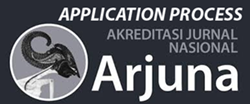Pola Pengembangan Paragraf Pada Majalah Neotech
DOI:
https://doi.org/10.59653/jimat.v3i01.1397Keywords:
Paragraph Development Patterns, Journalistic Genre, LanguageAbstract
This research examines paragraph development patterns in the text of the July 2001 edition of Neotech Magazine using qualitative descriptive methods. Data was obtained through documentation studies and note-taking techniques, with a focus on analyzing the structure and linguistic elements of paragraphs. The research results identified five dominant paragraph development patterns: chronology, illustration, definition, comparison, and cause and effect. The chronology pattern is used to show the time sequence in technological development, the illustration pattern provides a concrete picture of technological concepts, the definition pattern explains technical terms, the comparison pattern contrasts various technologies, and the cause-and-effect pattern explains causal relationships in technological development. The use of these patterns helps writers convey technology information effectively to readers, with each pattern having a specific function in increasing reader understanding. This research contributes to the development of more effective technology text writing strategies and can be used as a reference in technology journalistic writing.
Downloads
References
Abrar, Ana Nadhya. (2011). Analisis Pers Teori dan Praktik. Yogyakarta:Cahaya Atma Pustaka.
Dzambiyah, Asfiyatu., Rakhman, Patra Aghtiar., dan Rokmanah, Siti. (2024). Analisis Kesulitan Peserta Didik dalam Mengidentifikasi Ide PokokParagraf di SDN Smepu 2. Jurnal Pustaka, 4 (1), Halaman: 241—253. DOI: https://doi.org/10.56910/pustaka.v4i1.1085
Fairini, Rini Suryalies; Sumaryoto; Sumadyo, Bambang. (2020). Tema dan Pola Pengembangan Paragraf dalam Artikel Opini di Harian Umum Pikiran Rakyat, Diskursus: Jurnal Pendidikan Bahasa Indonesia 3(3), Halaman 250-260.
Jamaludin,,Zaenab. (2022). Kemampuan Menulis Gagasan Pendukung Dalam Bentuk Paragraf Argumentasi Siswa Kelas X SMAN 2 Ende Tahun Ajaran 2021/2022. Jurnal Retorika, 3(1), Halaman 87—94. DOI. https://doi.org/10.37478/rjpbsi.v3i1.1912
Magriva, Laura; Triyadi, Slamet; Muhtarom, Imam. (2021). Pola Pengembangan Dan Unsur-Unsur Paragraf Pada Teks Latihan Modul Daring ”Aksi Bahasa Untuk Sekolah”, Jurnal Ilmiah Korpus 2(5), Halaman 250-261. DOI: https://doi.org/10.33369/jik.v5i2.20147
Maharani, Resti Yulita; Repelita, Tridays; Nurcahyani, Reni; Noviana, Shela. (2024). Pola Pengembangan Paragraf Pada Sebuah Tulisan, Esensi Pendidikan Inspiratif 3(6), Halaman 464-473.
Notanubun, Zainuddin; Ririhena, R. L.; Notanubun, Erwin. (2021). Kemampuan Mengidentifikasi Unsur-Unsur Paragraf dengan Kemampuan Mengembangkan Kalimat Topik dalam Karangan Deskripsi pada Siswa SD Negeri Piru Kabupaten Seream Bagian Barat, Pedagogika: Jurnal Pedagogik dan Dinamika Pendidikan 1(9), Halaman 67-74. DOI: https://doi.org/10.30598/pedagogikavol9issue1year2021
Ong, Walter J. (2013). Kelisanan dan Keaksaraan. Yogyakarta:Gading Publishing.
Puspitosari, Rahajeng; Lokananta, Arbi Cristional. (2021). Peran Media Komunikasi Digital pada Pola Komunikasi Guru dan Murid, Avant Garde: Jurnal Ilmu Komunikasi 1(9), Halaman 100-109.
Sakri, Adjat. (1992). Bangun Paragraf Bahasa Indonesia. Bandung: ITB.
Samsudin, Didin; (2019). Pola Pengembangan Paragraf Pembuka Dalam Berita Utama Koran Di Cirebon Dan Di Bogor Jawa Barat, Sirok Bastra 1(7), Halaman 47-59.
Sari, Fiki Nurmanda; Jamil, Zawaqi Afdal. (2020). Peningkatan Kemampuan Menulis Paragraf Mahasiswa Universitas Islam Negeri Sulthan Thaha Saifuddin Jambi Menggunakan Media Google Classroom, Primary Education Journal 1(4), Halaman 1-7. DOI: https://doi.org/10.30631/pej.v4i1.41
Saryono, Djoko & Soedjito. (2021). Paragraf. Jakarta: Bumi Aksara.
Simarmata, Salvator. (2014). Media & Politik. Jakarta: Yayasan Obor Indonesia.
Suladi. (2019). Paragraf: Buku Seri Penyuluhan Bahasa Indonesia. Jakarta: Pusat Pembinaan Bahasa dan Sastra Badan Pengembangan Bahasa dan Perbukuan.
Downloads
Published
How to Cite
Issue
Section
Categories
License
Copyright (c) 2025 Julpandi, Kristian Gunawan, Fikri Fauzi, Eva Dwi Kurniawan

This work is licensed under a Creative Commons Attribution-ShareAlike 4.0 International License.
Authors who publish with this journal agree to the following terms:
- Authors retain copyright and grant the journal right of first publication with the work simultaneously licensed under a Creative Commons Attribution-ShareAlike that allows others to share the work with an acknowledgement of the work's authorship and initial publication in this journal.
- Authors are able to enter into separate, additional contractual arrangements for the non-exclusive distribution of the journal's published version of the work (e.g., post it to an institutional repository or publish it in a book), with an acknowledgement of its initial publication in this journal.
- Authors are permitted and encouraged to post their work online (e.g., in institutional repositories or on their website) prior to and during the submission process, as it can lead to productive exchanges, as well as earlier and greater citation of published work (See The Effect of Open Access).























